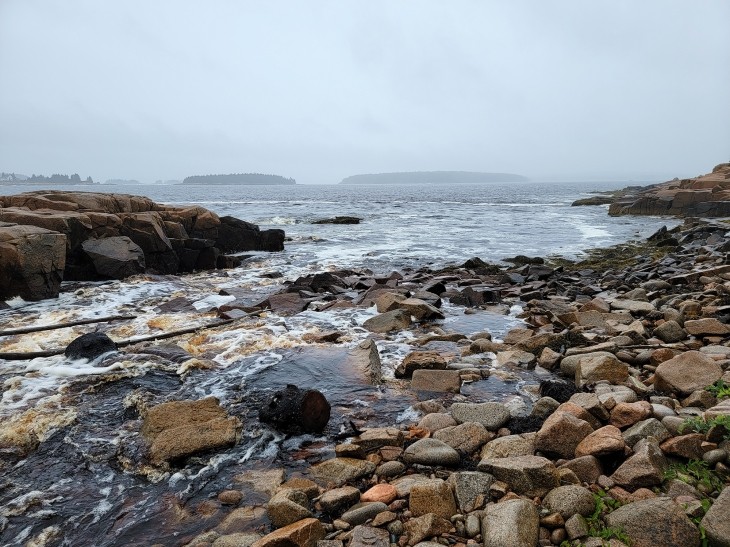
Most of the stories about carbon in the Northern Forest focus on sequestration and storage: all that carbon taken in and held by the region’s trees, plants, animals, fungi, and soils. But eventually some of that carbon dissolves in water moving through the soil, finds its way into lakes and rivers, and, ultimately, flows out to sea.
The urgent need to track global carbon emissions has directed (and funded) more scientific attention on land-sourced carbon (“terrestrial carbon”) accumulation in the ocean. Once this carbon leaves the land, does most of it stay in the water, settle to the ocean floor, or end
up back in the atmosphere?
Supported by NASA, researchers at University of Maine combined multiple datasets to model what happens to dissolved terrestrial carbon that flows from the Androscoggin, Kennebec, and Penobscot rivers to the Gulf of Maine. Using long-term records of U.S. Geological Survey measurements of dissolved organic carbon concentrations in these rivers – and data from other studies of carbon cycling in the marine environment – they estimated the various routes and transformations of carbon delivered to the sea each day from January through March 2014, and modeled where it ended up 180 days later. Most of it, about 51 percent, was broken down by bacteria and other microbes. Smaller amounts were released as carbon dioxide after exposure to ultraviolet radiation from the sun (5.4 percent) and buried in sediment (6.6 percent), either by adsorbing to sinking particles or by being brought to the sea floor by downwelling currents. The rest, 37 percent, was still suspended in the water of the Gulf of Maine.
In the February 2024 issue of Environmental Science & Technology, the researchers offered recommendations to improve models for studying terrestrial carbon in oceans. One is accounting for the carbon that traveled beyond Browns and Georges banks, the shoals that act as underwater gates to the Gulf of Maine and served as the edge of the study’s model framework. Another is refining the information about the chemical and physical characteristics of dissolved organic carbon, including associated molecules of iron and copper that feed bacteria that break down carbon. Another area for further study is actual measurement of forest carbon in the ocean, a challenging but not impossible task.

